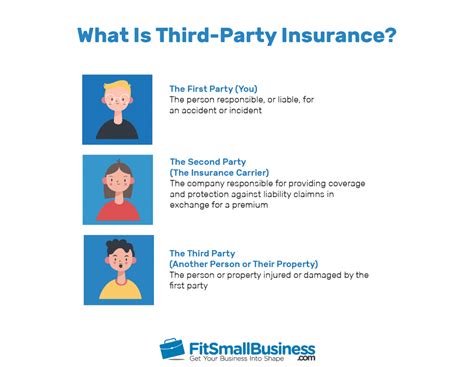Discover the benefits of second-to-die insurance, how it works, tax implications, and tips for choosing the right policy. Get all the insights you need.
Understanding Second-to-Die Insurance
Contents
Second-to-die insurance is a type of life insurance policy that insures two lives, typically a married couple. This type of insurance policy pays out a death benefit only when the second insured individual dies. It is often used as part of estate planning to provide funds to pay estate taxes and other expenses. The policy can be less expensive than two separate life insurance policies, making it an attractive option for couples.
One of the key benefits of second-to-die insurance is the cost savings. Because the policy pays out only after the death of the second insured individual, the insurance company is able to charge lower premiums. This can be especially beneficial for couples who may have had difficulty obtaining individual life insurance policies due to health issues or other factors.
Another benefit is the potential for tax-free death benefit. Since the death benefit is typically used to pay estate taxes and other expenses, it can help to preserve the assets of the estate for the beneficiaries. Additionally, the death benefit is generally income tax-free to the beneficiaries, providing a source of funds without tax consequences.
When considering a second-to-die insurance policy, it’s important to understand how it works. The policy is typically used in estate planning to provide liquidity to pay estate taxes and other expenses, rather than as income replacement for the surviving spouse or beneficiaries. It’s important to work with a knowledgeable insurance professional who can help determine the appropriate amount of coverage and the right type of policy for your specific situation.
Benefits of Second-to-Die Insurance
Second-to-Die Insurance, also known as survivorship insurance, is a type of life insurance policy that covers two individuals, typically a married couple. The main benefit of this type of insurance is that it pays out the death benefit only after both individuals covered under the policy have passed away. This can be advantageous for estate planning and providing financial security for future generations.
One of the key benefits of Second-to-Die Insurance is that it can be used as a tool for estate planning. Because the death benefit is not paid until the second insured individual passes away, the policy can be used to help cover estate taxes and other expenses that may arise after both individuals are deceased. This can be especially useful for wealthy individuals who want to ensure that their assets are preserved for their heirs.
Another benefit of Second-to-Die Insurance is that it can provide financial security for future generations. The death benefit can be used to help cover the costs of education, medical expenses, or other financial needs of the surviving family members. This can help to ease the financial burden on the next generation and provide peace of mind for the insured individuals.
Additionally, Second-to-Die Insurance can be more cost-effective than purchasing separate life insurance policies for each individual. Because the policy only pays out after the death of both insured individuals, the premiums for Second-to-Die Insurance are typically lower than those for individual life insurance policies. This can make it a more affordable option for couples who want to provide financial protection for their loved ones.
In conclusion, Second-to-Die Insurance offers several benefits, including its usefulness for estate planning, providing financial security for future generations, and its potential cost-effectiveness. Couples who are considering their life insurance options should carefully consider the benefits of Second-to-Die Insurance and how it can fit into their overall financial planning strategy.
How Second-to-Die Insurance Works
Second-to-Die Insurance, also known as survivorship insurance, is a type of joint life insurance policy that insures two people and pays out a death benefit only after the death of the second insured individual. This type of insurance is commonly used by married couples as a way to provide financial protection for their heirs and beneficiaries. It is often used as part of estate planning to help cover estate taxes and other costs that may arise after both individuals have passed away.
When the first insured person dies, the policy remains in force and the premiums continue to be paid. It is only when the second insured person passes away that the death benefit is paid out to the named beneficiaries. This can be a useful strategy for couples who want to ensure that their heirs are taken care of after both individuals have passed away.
Second-to-Die Insurance policies can be either whole life or universal life policies, meaning that they have a cash value component that can grow over time. This cash value can be accessed by the policyholders during their lifetime for purposes such as supplementing retirement income or covering unexpected expenses.
It is important to note that Second-to-Die Insurance policies typically have lower premiums than individual life insurance policies, making them a cost-effective option for couples who want to leave a financial legacy for their loved ones. However, it is essential to carefully consider the terms and conditions of the policy, as well as the specific needs and goals of the insured individuals, before purchasing a Second-to-Die Insurance policy.
Choosing the Right Second-to-Die Policy
When it comes to choosing the right second-to-die policy, there are several factors that need to be taken into consideration. The first step is to evaluate the financial needs of your beneficiaries and come up with an estimate of the amount of coverage that would be needed to provide for them in the event of your passing. This calculation should take into account any existing debts, future expenses, and potential estate taxes.
Next, it’s important to compare different policies from various insurance providers. This involves looking at the premium amounts, coverage limits, and any additional features or riders that may be included. It’s also crucial to assess the financial stability and reputation of the insurance company, as you want to ensure that they will be able to fulfill their obligations when the time comes.
Another important aspect to consider is the type of second-to-die policy that best suits your needs. There are two main types: traditional second-to-die and survivorship universal life insurance. The former pays out upon the second death, while the latter accumulates cash value and can provide income benefits during retirement.
Furthermore, it’s essential to review the terms and conditions of the policy, including any exclusions or limitations that may apply. This can involve consulting with a financial advisor or insurance agent to ensure that you have a clear understanding of what the policy entails and how it will be administered.
Ultimately, the process of choosing the right second-to-die policy requires careful consideration and due diligence. It’s a decision that will have a significant impact on the financial security of your loved ones, so taking the time to research and assess your options is crucial.
Tax Implications of Second-to-Die Insurance
When considering second-to-die insurance, it’s important to take into account the tax implications of such a policy. Second-to-die insurance, also known as survivorship insurance, is a type of life insurance policy that covers two individuals and pays out the death benefit only upon the death of the second insured individual. This unique feature of second-to-die insurance is due to the fact that it is typically used for estate planning purposes, rather than income replacement.
One of the primary tax implications of second-to-die insurance is that the death benefit is usually not taxable to the beneficiaries. This can be a significant advantage for individuals looking to transfer wealth to their heirs without incurring hefty estate taxes. Additionally, the premiums paid for second-to-die insurance are typically less than those for traditional individual life insurance policies. This can result in a more tax-efficient way of providing for the payment of estate taxes or other expenses upon the death of the second insured individual.
Another important tax implication to consider is the use of second-to-die insurance as part of a larger estate plan. By structuring the ownership of the policy and designating the proper beneficiaries, individuals can minimize the potential tax burden on their estates. For example, placing the policy in an irrevocable life insurance trust (ILIT) can help remove the death benefit proceeds from the insured’s taxable estate.
It’s essential to note that while the death benefit of a second-to-die insurance policy is generally not subject to income tax, there may be potential gift tax implications when the policy is transferred or when the premiums are paid by someone other than the insured individuals. Consulting with a tax professional or estate planning attorney can help ensure that the tax implications of second-to-die insurance are fully understood and integrated into a comprehensive estate plan.












